ANNUNCIATION
UMBRIAN SCHOOL, CIRCA 1520, CIRCLE OF GIOVAN BATTISTA CAPORALI
Tempera and oil on panel
25.4 x 18.7 cm / 10 x 7.4 in, with frame 45.4 x 28.7 cm / 17.9 x 11.3 inches
PROVENANCE
(probably) Poland, Lodz, collection of Herman and Max Kunert (I’m thankful for this information to dr. Dariusz Kacprzak)
Germany, Stuttgart, private collection
STYLISTIC AND HISTORICAL CONTEXT
This small panel (25.4 x 18.7 cm) is a characteristic example of Umbrian painting from the first quarter of the 16th century, stylistically linked to Giovan Battista Caporali, a follower of Pietro Perugino. The painting demonstrates the delicate balance between Perugino’s refined elegance and more archaic elements that hint at a provincial hand. The figures, though slightly rigid, are set against a carefully constructed background, where the landscape—recalling Lake Trasimeno—adds depth and atmospheric perspective.
The panel was likely created as a modelletto, a small-scale preparatory painting presented to a patron before executing a larger fresco. According to Roberto Ciabattini, who has conducted extensive research on the piece, it may be connected to an Annunciation fresco in the Chapel of St. John at the Castle of Magliana (Rome). This medieval oratory was reconstructed by Bramante in the early 16th century, serving as a papal retreat. Its decoration involved artists from Raphael’s workshop, who painted the Blessing Eternal Father (now in the Louvre), while other painters were responsible for the Annunciation, Visitation, and Martyrdom of Saint Cecilia. The compositional structure of this panel, particularly its architectural framing and spatial harmony, echoes Perugino’s Annunciazione Ranieri, a painting that greatly influenced Umbrian artists of the period.
ATTRIBUTION AND ARTISTIC INFLUENCES
The painting bears clear affinities with Perugino’s celebrated Annunciations, such as the Ranieri Annunciation (Museo Nazionale dell’Umbria) and the Fano Annunciation (Santa Maria Nuova, Fano). It also reflects elements found in Raphael’s Annunciation from the Oddi Altarpiece, now in the Vatican Pinacoteca, and his preparatory study in the Louvre (INV. 3860). Ciabattini notes that another possible influence is Francesco Tifernate, a little-documented artist from Città di Castello, whose works demonstrate a synthesis of Perugino’s compositional clarity and Raphael’s evolving style.
The duality in this painting’s execution—where finely rendered architectural space contrasts with the somewhat stiff figures—suggests that the artist belonged to the circle of Giovan Battista Caporali. Caporali’s training under Perugino and exposure to Pinturicchio and Raphael equipped him with a refined artistic vocabulary, though his provincial background is evident in certain stylistic elements. This balance between tradition and innovation defines many works produced in Perugia during the early 16th century, as artists negotiated between local artistic heritage and emerging Renaissance ideals.
GIOVAN BATTISTA CAPORALI AND HIS LEGACY
Born in Perugia around 1475, Giovan Battista Caporali, son of the painter Bartolomeo Caporali, was deeply immersed in Umbrian artistic traditions. His training under Perugino instilled a preference for harmonious compositions and serene figures, while his exposure to Florentine and Roman influences added a more dynamic dimension to his work. His artistic career was not limited to painting—he was also an accomplished architect. One of his significant projects was the construction of a palace near Cortona for Cardinal Silvio Passerini, where he collaborated with Maso Papacello on decorative frescoes. His scholarly engagement with classical architecture led him to publish an annotated Italian translation of Vitruvius’s De Architectura in 1536, a testament to his intellectual curiosity.
His paintings remain scattered across Perugia, Panicale, and Cortona, with notable works such as the Adoration of the Shepherds with the Eternal Father in Glory in Collegiata di San Michele Arcangelo (Panicale) and the Madonna and Child Enthroned with Saints in Museo Nazionale dell’Umbria (Perugia). Caporali’s legacy endured through his pupils, including Organtino di Mariano, and his contribution to Umbrian Renaissance art continues to be recognized today.
While the author of this Annunciation panel remains unidentified, Ciabattini’s research places it firmly within the circle of Caporali, illustrating the enduring artistic lineage of Perugino’s school. Its careful balance of architectural perspective, spatial clarity, and delicate atmospheric effects makes it a fascinating testament to early 16th-century Umbrian artistry.




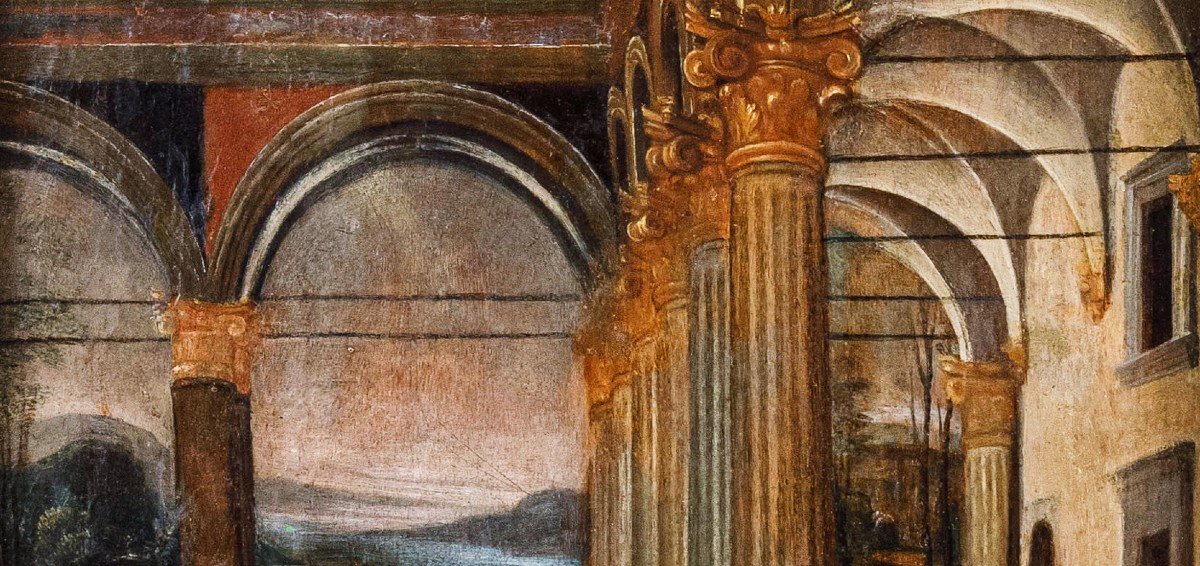
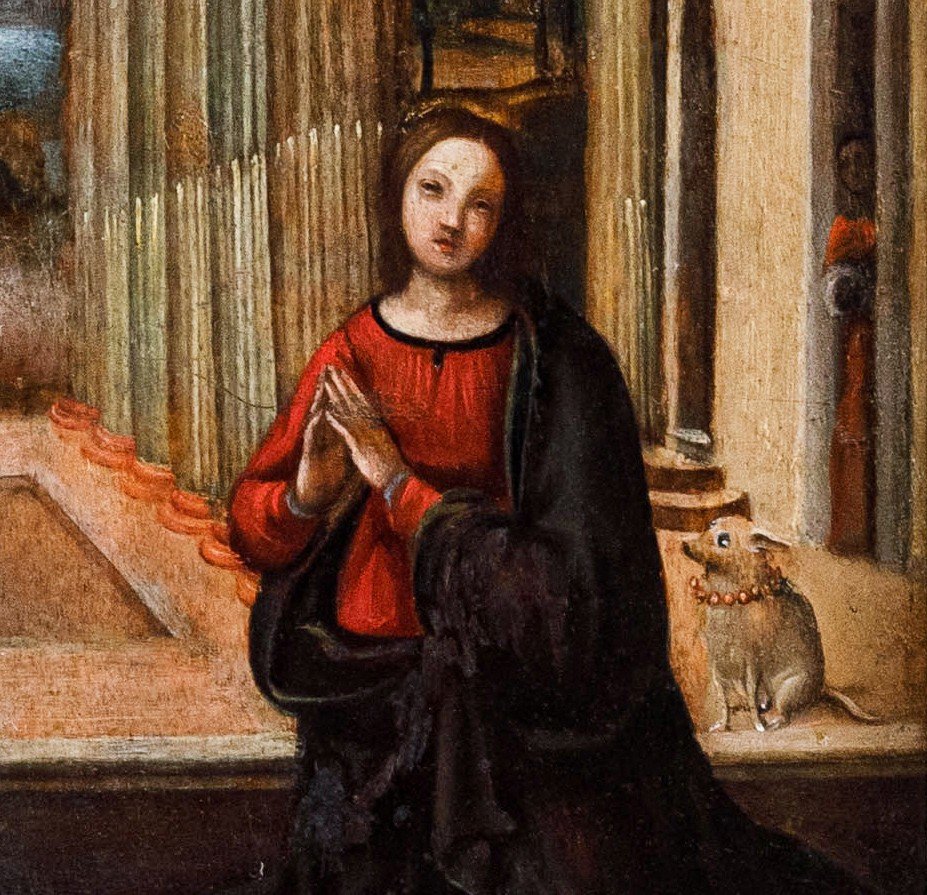


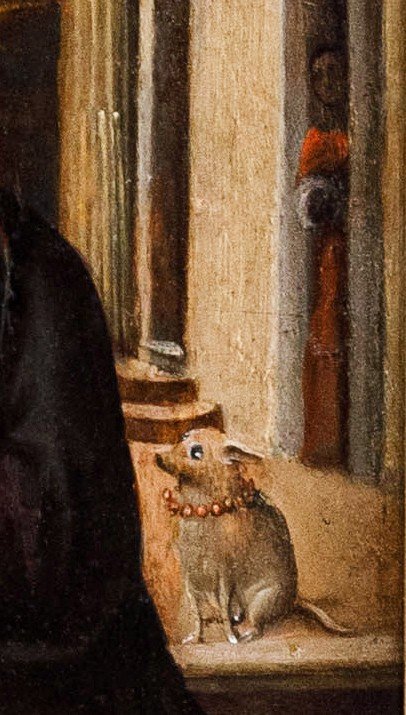
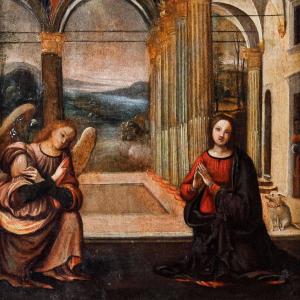











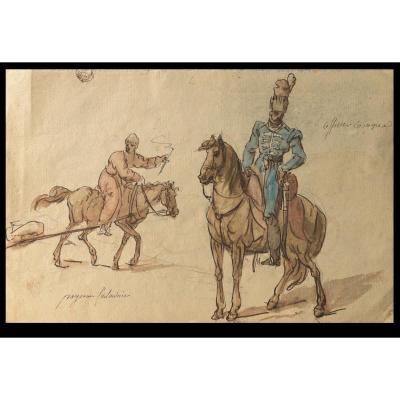


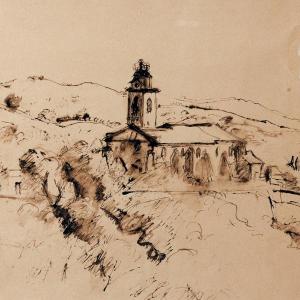





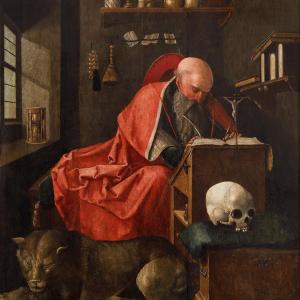



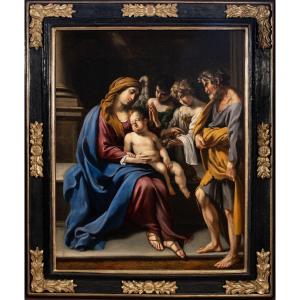





 Le Magazine de PROANTIC
Le Magazine de PROANTIC TRÉSORS Magazine
TRÉSORS Magazine Rivista Artiquariato
Rivista Artiquariato